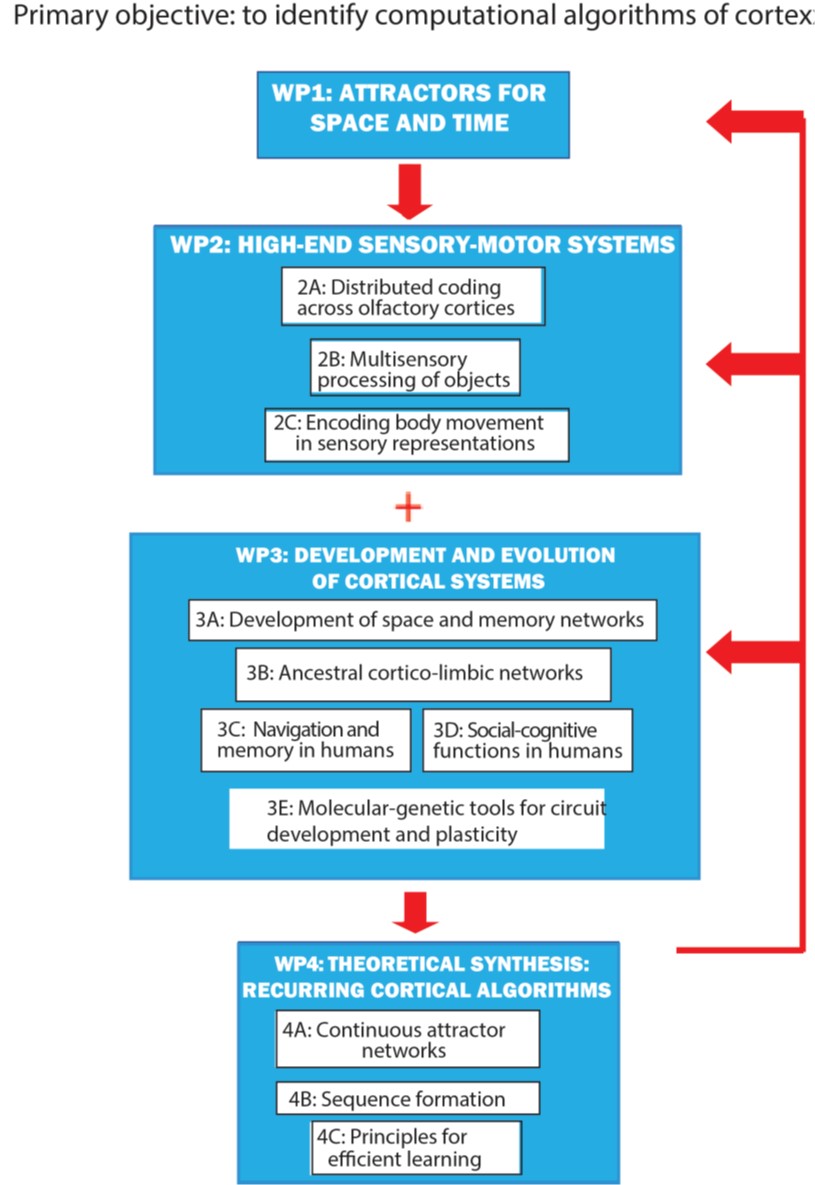WP4A: Continuous attractor network models in space-coding brain systems - Kavli Institute for Systems Neuroscience
WP4A: Continuous attractor network models in space-coding brain systems
About
Motivation
Without direct experimental testing, continuous attractor network (CAN) models have remained ideal and simplified.
Aims
We will investigate in models the connectivity patterns that might underlie CAN dynamics and develop models of the coordination of CANs across grid modules and between grid and place cells.
Specific aims:
4.1 To explore in models the range of connectivity schemes capable of supporting CAN dynamics in grid and head direction cells, and to compare the findings with data from WP1;
4.2 To determine whether modular organization of grid cells confers advantages on coding capacity;
4.3 To investigate mechanisms of coordination between modules of grid cells and place cells in HPC.
Implementation
We will explore, in models, the dynamics of CANs with various forms of connectivity, under different hypotheses concerning the mechanisms of plasticity shaping neural connectivity, and we will compare the findings with the data from WP1.
We will develop methods for inferring functional connectivity from activity data, and will compare the results with theoretical predictions.
We will examine, in models, the accuracy of position decoding from grid cells organised into modules, through comparison with that of non-modular grid-cell codes.
We will develop computational tools for estimating functional coupling between modules of grid cells and coupling to other MEC cell types and external cues, including velocity signals.
Using these tools on simultaneous recordings from the MEC and HPC, we will develop models for the collective dynamics and co-ordination of CAN networks for place and grid cells.

